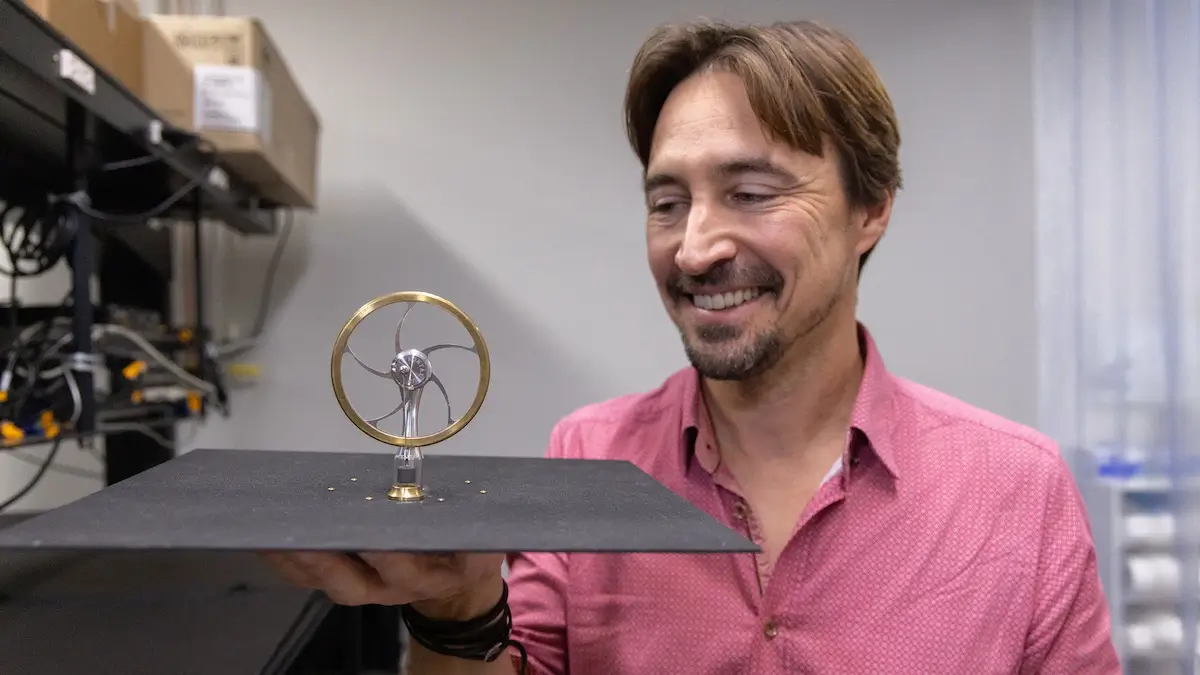The article This motor generates electricity at night – with the cold of space first appeared in the online magazine BASIC thinking. With our newsletter UPDATE you can start the day well informed every morning.

Researchers have harnessed the cold of space to generate electricity at night. A so-called Stirling engine converts temperature differences into power.
Researchers at the University of California have found a way to generate mechanical energy at night by exploiting an often-overlooked temperature difference. Their technology is based on the natural difference between the warm surface of the earth and the cold of space.
This approach opens up opportunities for generating energy that do not rely on sunlight or conventional fuels. The research results were published in the specialist journal Science Advances published.
The researchers developed a device based on a Stirling engine. This is a machine that is powered by temperature differences. In contrast to most engines, which require a large temperature difference, the Stirling engine can work with a low contrast. The difference can be as small as between a hot cup of coffee and the ambient air.
Motor taps into space’s cold and generates electricity at night
Typically, a Stirling engine is operated by connecting one side to a heat source and the opposite side to a cooler environment. The researchers’ idea was to connect the cold side with extremely cold space.
According to Professor Jeremy Munday from UC Davis, the facility does not have to physically touch space, but can interact with it radiantly. The concept is similar to the feeling of standing outside on a cold, clear night, where your head quickly becomes cold as heat radiates away.
Researchers Tristan Deppe and Jeremy Munday took a simple Stirling engine, placed it on a plate that served as a heat-radiating antenna, and placed the whole thing outdoors on the ground at night. The ground acts as the warm side of the engine, while the antenna channels the cold of space.
Usable mechanical power
Year-round nighttime experiments showed that the small system can actually generate continuous mechanical power of at least 400 milliwatts per square meter. In addition, temperature differences of more than ten degrees Celsius were reached in most months.
The potential is believed to be greatest in areas with low humidity and clear night skies. As a test, the researchers used the system directly to drive a fan. They could also generate electricity by attaching a DC motor.
The energy generated could, for example, be used to circulate air through greenhouses or residential buildings. UC Davis has filed a provisional patent.
Also interesting:
- Shortcuts: Practical shortcuts for ChatGPT
- What happens to old electric car batteries?
- Waste heat from data centers: Finland shows how the energy transition works
- What exactly is machine learning?
The post This motor generates electricity at night – with the cold of space appeared first on BASIC thinking. Follow us too Google News and Flipboard or subscribe to our newsletter UPDATE.
As a Tech Industry expert, I find the concept of an engine that generates electricity at night using the cold of space to be incredibly innovative and promising. This technology could potentially provide a sustainable and efficient way to generate power during the night when traditional solar panels are not able to produce electricity.
Harnessing the cold of space as a source of energy is a unique approach that could have significant implications for the renewable energy sector. By utilizing this natural phenomenon, we could potentially reduce our reliance on fossil fuels and mitigate the impact of climate change.
I am excited to see how this technology develops and how it could be integrated into our existing energy infrastructure. It has the potential to revolutionize the way we generate electricity and could play a key role in transitioning to a more sustainable energy system. I look forward to seeing the advancements and potential applications of this innovative engine in the future.
Credits